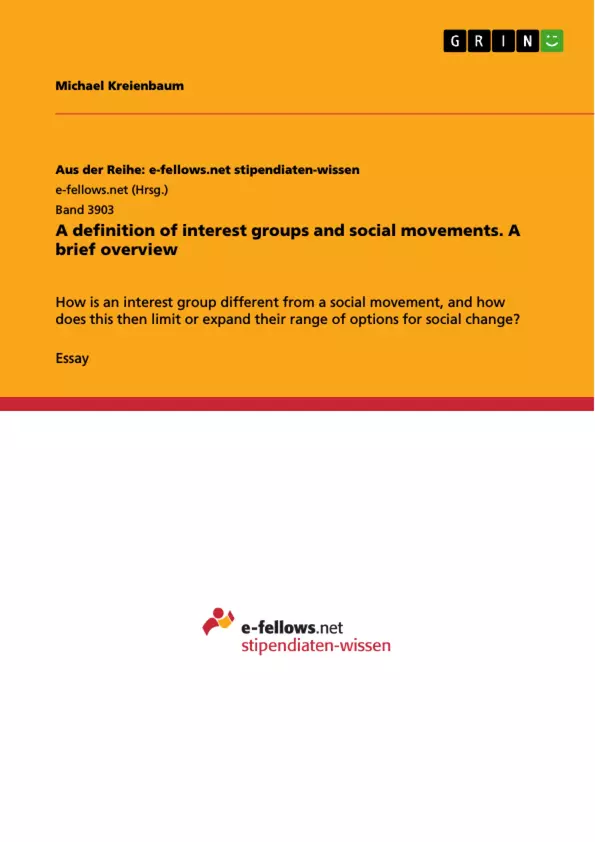This essay provides a delimitation of interest groups and social movements. Based on this, it derives how conceptual differences between both political bodies expand or restrict their options for social change. The complexity of the addressed issue results from overlapping cases of social movements and interest groups. Applied measures and organisational structures often depend on specific circumstances as typical for socio-political bodies. Hence, the essay begins with a technical definition of social movements. This conceptualisation makes it possible to develop both terms subsequently and to identify discerning criteria. It culminates with the example of the 1960s women’s rights movement by showing how the social movement (SM) transformed into an interest group (IG), putting both bodies in a processual relationship. A regional focus is placed on the US. Therefore, findings are valid for liberal-democratic systems and cannot be generalised without closer examination.
Table of Contents
- Introduction
- Distinguishing social movements and interest groups
- The organisational layer
- The incentive layer
- The behavioural layer
- Range of options for social change
- The political sphere
- The cultural sphere
- Public relations campaigns
- Transition from social movement to interest group
Objectives and Key Themes
This essay delves into the differences between interest groups and social movements and how these distinctions impact their avenues for social change. The essay aims to provide a clear conceptualization of both political bodies and analyze the factors that limit or expand their options for achieving social change. The essay primarily focuses on the United States, making findings applicable to liberal-democratic systems.
- Defining and distinguishing interest groups and social movements
- Analyzing the impact of organizational structure and incentives on social change
- Examining the range of options for social change within the political and cultural spheres
- Exploring the role of public opinion and public relations campaigns in social change
- Analyzing the transition from social movements to interest groups, exemplified by the 1960s US women's rights movement
Chapter Summaries
The essay begins by providing a technical definition of social movements, highlighting their informal networks, loosely connected actors, and reliance on shared collective identities. It then contrasts social movements with interest groups, emphasizing the latter's formal structures, coordinated actions, and reliance on individual self-interest rather than collective identity.
Further distinctions are drawn through the concept of "collective identity," showing how social movements, often driven by dissatisfaction with existing policies, seek radical change and engage in public controversy, while interest groups, with their singular interests, tend towards moderation and conciliatory approaches. The essay then explores the behavioural layer, focusing on the options for social change available to each body. It examines the political and cultural spheres, highlighting the distinct strategies and capabilities of interest groups in influencing policymaking through lobbying and mobilizing members, while social movements rely on unconventional means like public protests to gain attention.
The essay further explores the role of public opinion in shaping social change, revealing the challenges and opportunities that interest groups and social movements face in navigating public perception. It also analyzes the impact of rising social media on social change, highlighting its potential benefits and drawbacks for both interest groups and social movements.
Keywords
The primary focus of this essay lies in understanding the differences between interest groups and social movements. The text explores key themes such as social change, political spheres, cultural spheres, public opinion, lobbyism, and public relations campaigns. The essay also examines the role of collective identity, organizational structures, and incentive structures in shaping the options for social change available to both interest groups and social movements.
- Quote paper
- Michael Kreienbaum (Author), 2019, A definition of interest groups and social movements. A brief overview, Munich, GRIN Verlag, https://www.hausarbeiten.de/document/1128192


